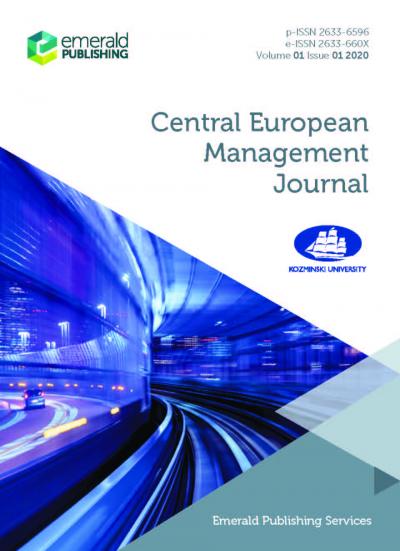Stock Market Reaction to CEO Appointment – Preliminary Results
Katarzyna Byrka-Kita
University of Szczecin
Mateusz Czerwiński
University of Szczecin
Agnieszka Preś-Perepeczo
University of Szczecin
2017 25 (2) Central European Management Journal
DOI 10.7206/jmba.ce.2450-7814.194








